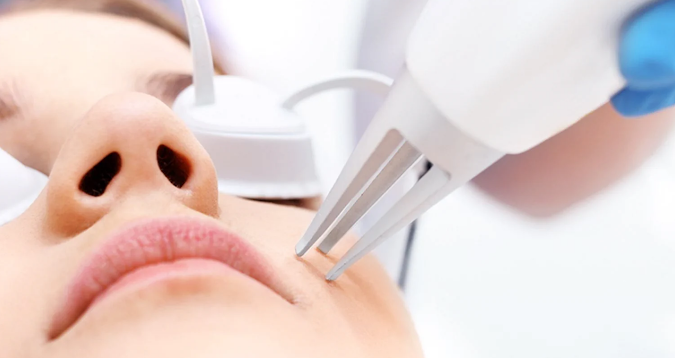Laser Treatment - Purpose, Types, and Procedures

Laser treatment has become one of the most effective methods for treating various skin problems, from acne to aging. In this article, we will discuss the purpose, types, and procedures of laser treatment.
Purpose of Laser Treatment
Laser treatment aims to penetrate into the skin and improve skin problems using laser light. The laser beam generates heat which can damage skin tissue and cause repair of the tissue.
Laser treatments can help treat a variety of skin problems, including:
- Acne and acne scars
- Dark spots, age spots and uneven pigmentation
- Fine lines and wrinkles
- Dull and lackluster skin
- sagging skin
- Scars and stretch marks
Types of Laser Treatment
There are several types of laser treatment to choose from depending on the skin condition you want to treat. The following are some types of laser treatment that are commonly used:
1. CO2 lasers
CO2 laser is a type of laser treatment that produces laser light with a long wavelength and high energy. This laser can selectively damage skin tissue and produce a very strong skin tightening effect. CO2 laser is suitable for treating wrinkles and fine lines on the skin, as well as helping to improve skin conditions that are too oily.
2. Erbium Lasers
Erbium laser is a type of laser treatment that produces laser light with a shorter wavelength than a CO2 laser. Erbium laser is suitable for treating fine lines, wrinkles, and dark spots on the skin. In addition, Erbium lasers can also help improve skin texture and make skin smoother.
3. Nd:YAG lasers
Nd:YAG laser is a type of laser treatment that produces laser light with a long wavelength and high energy. This laser is suitable for treating various skin problems, including acne and acne scars, as well as uneven pigmentation of the skin. In addition, the Nd:YAG laser can also help improve skin conditions that are dull and lackluster.
4. Fractional Lasers
Fractional laser is a type of laser treatment that uses a laser beam that is divided into several small points. This laser is suitable for treating scars, stretch marks, and skin conditions that are too oily. Fractional Laser works by repairing collagen in skin tissue, thus making the skin look firmer and smoother.
Laser Treatment Procedures
Before doing laser treatment, a dermatologist will evaluate skin conditions and determine the type of laser treatment that is most suitable for your skin condition. In addition, the dermatologist will also provide information regarding procedures and side effects that may occur during and after laser treatment.
Laser treatment procedures are usually performed using local anesthetic to reduce pain and discomfort during the procedure. The dermatologist will direct the laser beam to the area of the skin that needs to be treated, and repeat this process for all areas that need repair.
After the procedure is complete, the treated area will feel slightly burned and red. These effects will usually go away within a few hours or days after the procedure. During the recovery period, it is important to avoid direct sunlight and use sun protection creams to protect sensitive skin.
Conclusion
Laser treatment is an effective method for treating various skin problems, such as acne, dark spots, fine lines, sagging skin, and scars. There are several types of laser treatment to choose from depending on the skin condition you wish to treat, and this procedure is usually performed using local anesthesia.
Although effective, laser treatment also has side effects such as skin irritation, redness, and skin peeling. Therefore, before getting a laser treatment, be sure to consult an experienced dermatologist to find out if this method is suitable for your skin condition and to ensure its safety and effectiveness.
